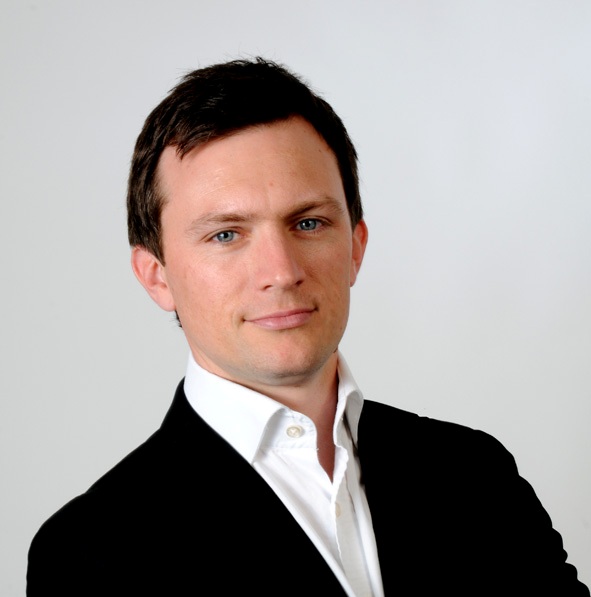 Around 20 years ago, Medicrea launched as an orthopedic device company. In 2006, the company went public and began investing in research and development focusing on new technologies to improve standard spinal products.
Around 20 years ago, Medicrea launched as an orthopedic device company. In 2006, the company went public and began investing in research and development focusing on new technologies to improve standard spinal products.
"Over the years we have gathered experience and clinical knowledge on the most complex scoliosis and degenerative cases," says David Ryan, VP of product development and marketing for Medicrea. "Complex spine surgery has been our main focus and we've been working with leading surgeons in France and the United States who provide their expertise and collaborate with our engineers to develop our products."
The collaboration between surgeons and engineers is a key aspect of the company's business model, and a reason why their products are successful. Medicrea’s research and development team has created an entirely new customized approach to spine surgery based on the research of over a decade by leading surgeons. But this new system would also have to be economically viable. The company developed UNiD, a patient-specific rod, and surgeons in Europe began performing the procedure last year. UNiD received 510(k) clearance from the U.S. Food and Drug Administration in November 2014 and has already been used successfully by institutions such as NYU Langone Medical Center.
"We now work closely with our surgeons to provide them with the patient sagittal code analyzed during the planning stage that they did not have access to previously to help them better plan the surgery before even stepping in the operating room," says Mr. Ryan. "We have a dedicated team of biomechanical experts who work with surgeons on a daily basis, collecting and analyzing patient data before the surgery, to help plan each case. We develop the customized rod based on the patient's X-ray and by using our software program, which takes into account the most recent scientific data on the sagittal parameters necessary to determine and restore optimal spinal alignment for each patient. It takes us less than seven days to produce the rod and send it out. We didn't want the surgeon to have any constraints compared to his standard surgical flow."
When surgeons are able to achieve the appropriate correction, they can fix and fuse the spine according to their preoperative plan. That was Medicrea's first introduction into the customization world and now they're moving into three-dimensional printed devices.
"The marriage of technology and science allows us to provide a better service to the surgeons," says Mr. Ryan. "Moving forward in that direction, we decided to work on a second topic of interest — the fusion devices for spine, both interbody and corpectomy. We started working with the three-dimensional printing three years ago. We decided to customize fusion cases, which allow us to deliver a tailor-made device for each specific patient."
Mr. Ryan believes this technology will improve outcomes for each patient using devices designed and produced for individual anatomies. This process could also impact healthcare delivery economics because surgeons can provide just the care and correction needed without wasting components that don't fit or changing the anatomy to make components fit.
"Anything we can do to make the surgeon's life easier at the end of the day, provide better quality care and reduce the cost of care is moving in the right direction. We believe that the surgeon community will be unable to provide the best possible treatment to their patients without this type of product and support," says Mr. Ryan. "All the technologies we've invested in over the past three years are technologies that allow us to help surgeons pre-plan customized procedures in a relatively short timeframe — a few weeks instead of several months. It has to be quick and cost-effective. Three-dimensional printing is the perfect example of this because it allows the specifications for what each patient requires in a very quick manner. We're working on reproducing the technology for different indications. We're looking at the spine, trauma and tumor resection in particular. There is no limit to what can be done."
Even as Medicrea reports some success with the technology, it's unlikely many other companies will be following their lead. It takes significant investment to create a three-dimensional printed implant business line, and testing the technology is a huge undertaking.
"We've made the choice to invest and print the implants ourselves because even though we're still a relatively small sized company in this market, we believe that to move fast and respond to surgeon requests we need to handle everything and understand the technology inside out. Understanding the best way to plan the patient's specific procedure requires significant knowledge," says Mr. Ryan. "There are markets expanding in a lot of areas of the world. The United States is still the biggest market in the spine arena, and there is a lot taking place in the Asia markets as well."
Historically, Medicrea worked with distributors in the region to sell their devices. The company has a presence in Europe, Asia and the Middle East. Surgeons in other countries are learning a lot from surgeons in the United States and Western Europe, learning new technology and techniques.
"There is a lot to be done to help surgeons understand why planning surgeries is beneficial,” says Mr. Ryan. "We're working to connect key surgeons with educational platforms to ensure patients receive the best possible care in the areas where these procedures are being performed and we strongly believe personalized medicine will soon become the new standard of care in spine surgery."

